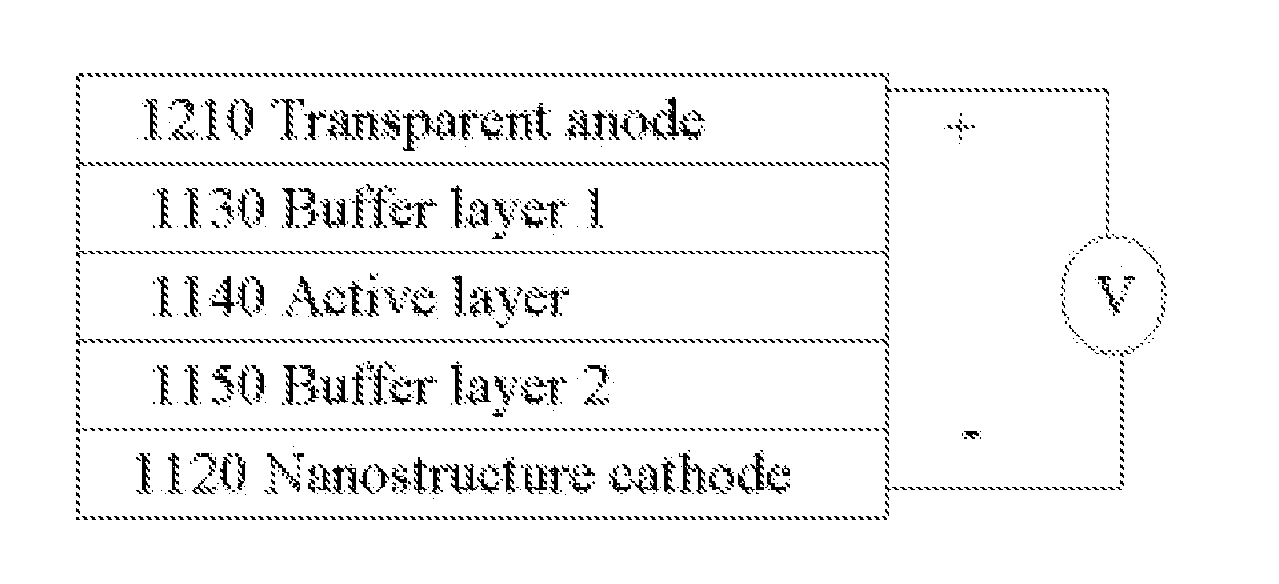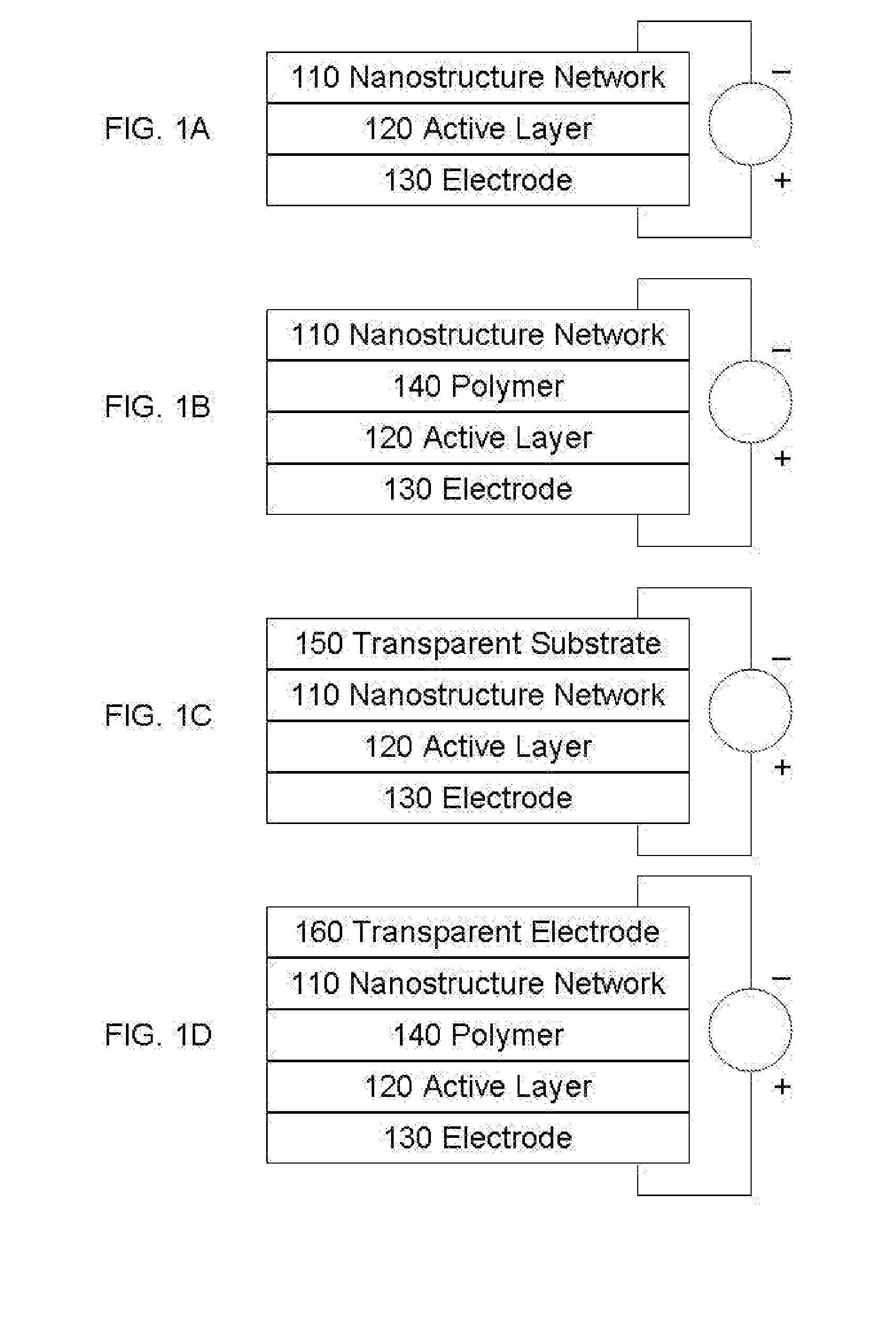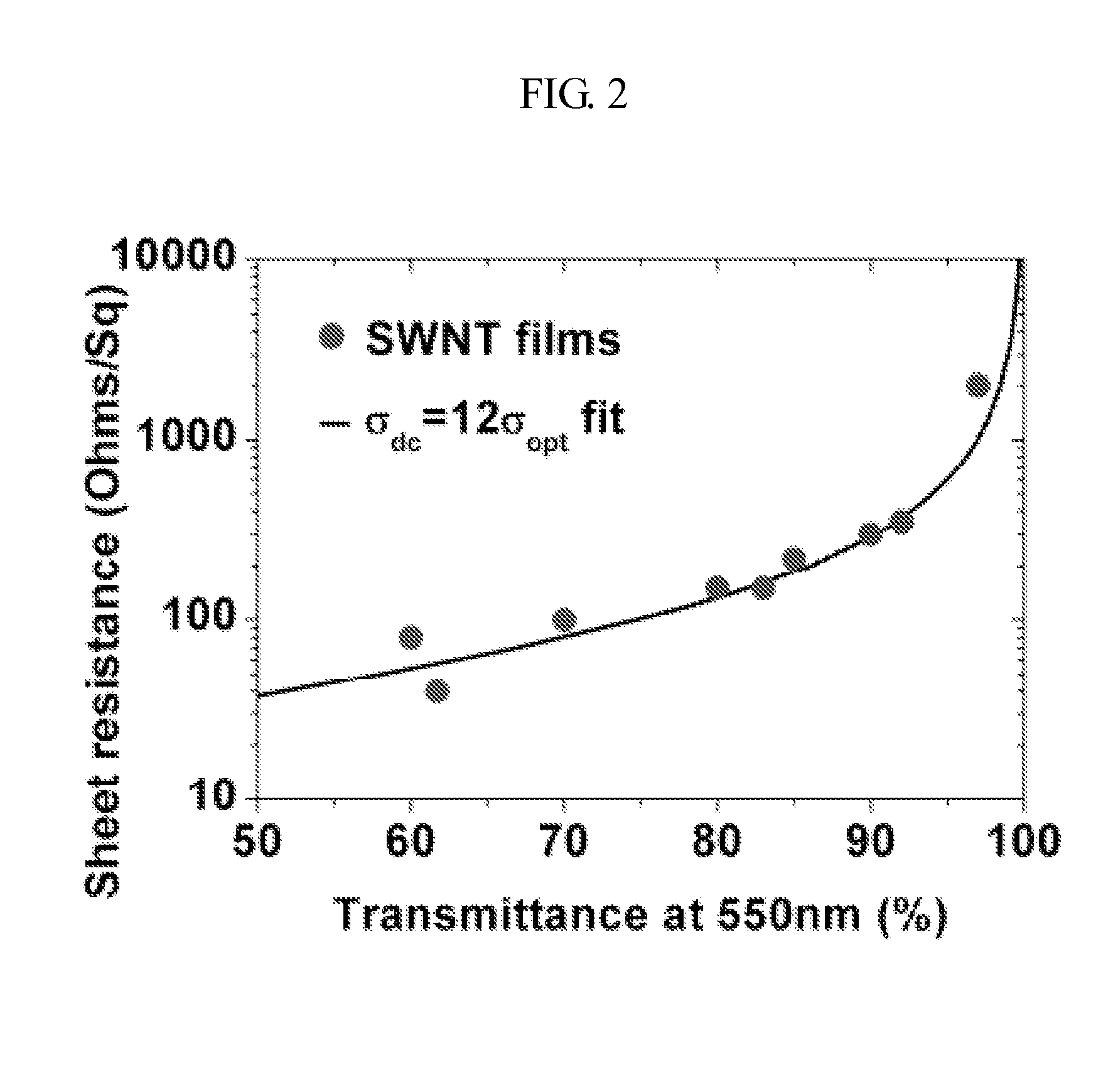Solar cell with nanostructure electrode(s)
a nano-structure, solar cell technology, applied in the field of thin-film solar cells, can solve the problems of high cost of c-, severe damage to the underlying active layer, and the indium component of ito is rapidly becoming a scarce commodity, and achieves the effect of high power conversion efficiency
- Summary
- Abstract
- Description
- Claims
- Application Information
AI Technical Summary
Benefits of technology
Problems solved by technology
Method used
Image
Examples
example
Solar Cell With Electrode Grid
[0053]In a solar cell, incoming light separates charges in a photosensitive active layer 120. However, these separated charges usually cannot travel far within this usually-thin functional layer before recombining.
[0054]Electrodes in an electrode grid 510 can gather these separated charges, but only if the charges can reach points in the active layer 120 that contact the electrodes 510. Unfortunately, these electrodes 510 must be spaced relatively far apart in a conventional metal electrode grid, given that the non-transparent electrodes thereof reduce light transmission to the underlying active layer 120 (the reduction in light transmission is proportional to the fractional area covered by the non-transparent electrodes of the metal electrode grid 510). Semi-transparent electrodes can be more closely spaced, however without an additional transparent conductive layer(s), a solar cell having only an electrode grid may nonetheless have low efficiency.
[005...
PUM
| Property | Measurement | Unit |
|---|---|---|
| sheet resistance | aaaaa | aaaaa |
| semi-transparent | aaaaa | aaaaa |
| sheet resistances | aaaaa | aaaaa |
Abstract
Description
Claims
Application Information
 Login to View More
Login to View More - R&D
- Intellectual Property
- Life Sciences
- Materials
- Tech Scout
- Unparalleled Data Quality
- Higher Quality Content
- 60% Fewer Hallucinations
Browse by: Latest US Patents, China's latest patents, Technical Efficacy Thesaurus, Application Domain, Technology Topic, Popular Technical Reports.
© 2025 PatSnap. All rights reserved.Legal|Privacy policy|Modern Slavery Act Transparency Statement|Sitemap|About US| Contact US: help@patsnap.com



